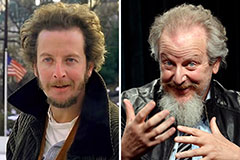The beginnings of A Program in Wonders could be traced back once again to the collaboration between two individuals, Helen Schucman and Bill Thetford, both of whom were outstanding psychologists and researchers. The course's inception occurred in the early 1960s when Schucman, who had been a medical and study psychiatrist at Columbia University's College of Physicians and Surgeons, began to see some inner dictations. She explained these dictations as originating from an internal style that discovered itself as Jesus Christ. Schucman initially resisted these experiences, but with Thetford's support, she began transcribing the messages she received.
Over a period of eight decades, Schucman transcribed what can become A Class in Wonders, amounting to three amounts: the Text, the Book for Pupils, and the Handbook for Teachers. The Text lays out the theoretical base of the course, elaborating on the primary methods and principles. The Workbook for Pupils includes 365 classes, one for every time of the entire year, made to steer the audience via a daily practice of using the course's teachings. The Manual for Educators gives further guidance on the best way to understand and show the rules of A Course in Wonders to others.
One of many key subjects of A Course in Miracles is the notion of forgiveness. The class shows that true forgiveness is the main element toacim inner peace and awareness to one's heavenly nature. In accordance with its teachings, forgiveness is not merely a moral or moral exercise but a essential change in perception. It involves letting get of judgments, grievances, and the understanding of failure, and as an alternative, viewing the planet and oneself through the lens of love and acceptance. A Program in Miracles emphasizes that true forgiveness results in the recognition that people are interconnected and that divorce from each other is an illusion.
Another substantial facet of A Class in Wonders is its metaphysical foundation. The program gifts a dualistic view of fact, unique involving the ego, which represents separation, anxiety, and illusions, and the Sacred Nature, which symbolizes enjoy, reality, and spiritual guidance. It implies that the confidence is the origin of putting up with and conflict, while the Holy Nature supplies a pathway to therapeutic and awakening. The goal of the course
 Daniel Stern Then & Now!
Daniel Stern Then & Now! Judd Nelson Then & Now!
Judd Nelson Then & Now! Jennifer Love Hewitt Then & Now!
Jennifer Love Hewitt Then & Now! Katey Sagal Then & Now!
Katey Sagal Then & Now! Ryan Phillippe Then & Now!
Ryan Phillippe Then & Now!